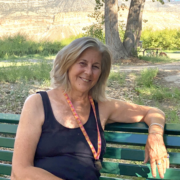
Alternative Paths for Preserving Material Culture and Bio Culture Heritage
Julia M Brennan and Lilian García-Alonso
Abstract
 As textile conservators from different backgrounds, we were drawn together by a common interest and respect for traditional technologies, materials, and practices used around the world to care for textile collections. These methods grounded in tangible and intangible knowledge systems have protected textiles for generations. They offer an alternative to the use of toxic chemicals for treating, cleaning, and fumigating collections. Our goal is to chronicle, adapt and share the stories, methods, and plant materials, and help create accessible and safe collection care practices.
As textile conservators from different backgrounds, we were drawn together by a common interest and respect for traditional technologies, materials, and practices used around the world to care for textile collections. These methods grounded in tangible and intangible knowledge systems have protected textiles for generations. They offer an alternative to the use of toxic chemicals for treating, cleaning, and fumigating collections. Our goal is to chronicle, adapt and share the stories, methods, and plant materials, and help create accessible and safe collection care practices.
Collaboration is the backbone of the project; we work with students, colleagues, and communities in North America and Southeast Asia. The model focuses on people-to-people interaction, and the exchange of skills and knowledge, with simple guidelines for research and data gathering. To preserve the bio-cultural heritage, the plant data is quantified; such as the cleaning of silk and cotton with plant-derived saponins, extracting and testing the effectiveness of aromatic compounds and hydrolates from endemic plants for pest control. Based on the cultivation and study of some plant specimens, a self-sustaining production system is being developed through ecological reintegration, as biocultural heritage. The findings, plant data, recipes, and methods are shared in workshops and open access publications so that this knowledge can be put into practice.
The goal is to build affordable, safe alternatives for the treatment of cultural heritage in general while nurturing the intangible heritage of traditional practices. This holistic and community-based approach to conservation helps to preserve rapidly disappearing traditional technologies, and build mutual respect for one another and our biocultural heritage.
Biographies
 Julia M. Brennan Caring for Textiles has worked in the field of textile conservation since 1985 and is committed to the protection of cultural property. Since 2000, she has led collections care and conservation initiatives in Bhutan, Madagascar, Algeria, Indonesia, Laos, and Thailand, including the preservation of victims’ clothing in Cambodia and Rwanda. Providing colleagues with sustainable skills is demonstrated in her 2019 project and publication “Our Ancestors Knew Best” quantifying traditional textile preservation methods and materials in Asia. She has a BA from Barnard College and an MA in art crime from The Association for Research in Crimes Against Art.
Julia M. Brennan Caring for Textiles has worked in the field of textile conservation since 1985 and is committed to the protection of cultural property. Since 2000, she has led collections care and conservation initiatives in Bhutan, Madagascar, Algeria, Indonesia, Laos, and Thailand, including the preservation of victims’ clothing in Cambodia and Rwanda. Providing colleagues with sustainable skills is demonstrated in her 2019 project and publication “Our Ancestors Knew Best” quantifying traditional textile preservation methods and materials in Asia. She has a BA from Barnard College and an MA in art crime from The Association for Research in Crimes Against Art.
 Lilian García-Alonso, professor and co-founder of the Traditional Technologies and Sustainability laboratory (ENCRyM), tries to generate interest in the rescue and appreciation of biocultural heritage and traditional technologies as sustainable, ecological, and necessary options in contemporary restoration. Clinical laboratory technician, Bachelor in conservation, master’s in studies of the relationship between artistic productions and society, and Ph.D. in Mesoamerican Studies. Firmly believes that the exchange of knowledge is an act of generosity.
Lilian García-Alonso, professor and co-founder of the Traditional Technologies and Sustainability laboratory (ENCRyM), tries to generate interest in the rescue and appreciation of biocultural heritage and traditional technologies as sustainable, ecological, and necessary options in contemporary restoration. Clinical laboratory technician, Bachelor in conservation, master’s in studies of the relationship between artistic productions and society, and Ph.D. in Mesoamerican Studies. Firmly believes that the exchange of knowledge is an act of generosity.

